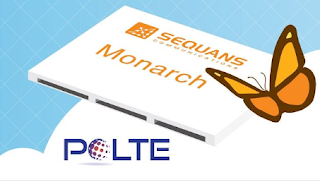U.S. consumer retail spending on tech products is expected to hit $398 billion in 2019, up 3.9%, according to the Consumer Technology Association (CTA).
"The consumer tech sector is fast approaching another milestone – almost $400 billion in annual revenues – as more consumers embrace the efficiency, safety, entertainment and anytime/anywhere communication that technology brings to our everyday lives," said Gary Shapiro, president and CEO, CTA.
Some highlights from CTA's newly released, flagship, semi-annual U.S. Consumer Technology Sales and Forecasts report:
"The consumer tech sector is fast approaching another milestone – almost $400 billion in annual revenues – as more consumers embrace the efficiency, safety, entertainment and anytime/anywhere communication that technology brings to our everyday lives," said Gary Shapiro, president and CEO, CTA.
Some highlights from CTA's newly released, flagship, semi-annual U.S. Consumer Technology Sales and Forecasts report:
- Smartphones: revenue is expected to reach $80 billion, a two percent increase in 2019. Unit shipments are expected to grow one percent to 170.7 million. This year marks the launch of the first 5G smartphones on the market. CTA expects 2019 U.S. sales will reach 2.1 million units and cross $1 billion in revenue. By 2022, 76 percent of all smartphones sold will be 5G-enabled.
- Laptops: In 2019, the U.S. laptop market will sell 51 million units, up three percent over last year, and earn $28.4 billion in revenue (unchanged from 2018). Convertible models and cloud-based laptops remain high-growth areas within computing, as consumers continue to upgrade to the latest operating systems.
- Televisions: Overall, unit sales of total digital displays in 2019 will remain above 42 million units (one percent decrease) and register $22.6 billion in revenue (two percent increase). More than three-quarters of TV shipments will be sets with 40-inch screens or larger. Future upgrades will be driven by 4K Ultra High-Definition (4K UHD) sets, which now make up more than half of all TV unit sales. 4K UHD will sell 22 million units (14 percent increase) and $16.4 billion in revenue (eight percent increase). Raising the bar on resolution, inaugural shipments of 8K UHD TVs will reach $545 million in revenue. And budding OLED shipments will reach 1.4 million sets with double-digit growth through 2022.
- In-Vehicle Tech: With more technology built into new cars than ever before, factory-installed automotive technology is projected to contribute $17 billion in revenue (nine percent increase) in 2019. Led by in-vehicle entertainment and driver-assist features such as active collision avoidance, lane keep assist and adaptive cruise control, consumer demand for advanced safety features pave the road for the self-driving car of the future.




















